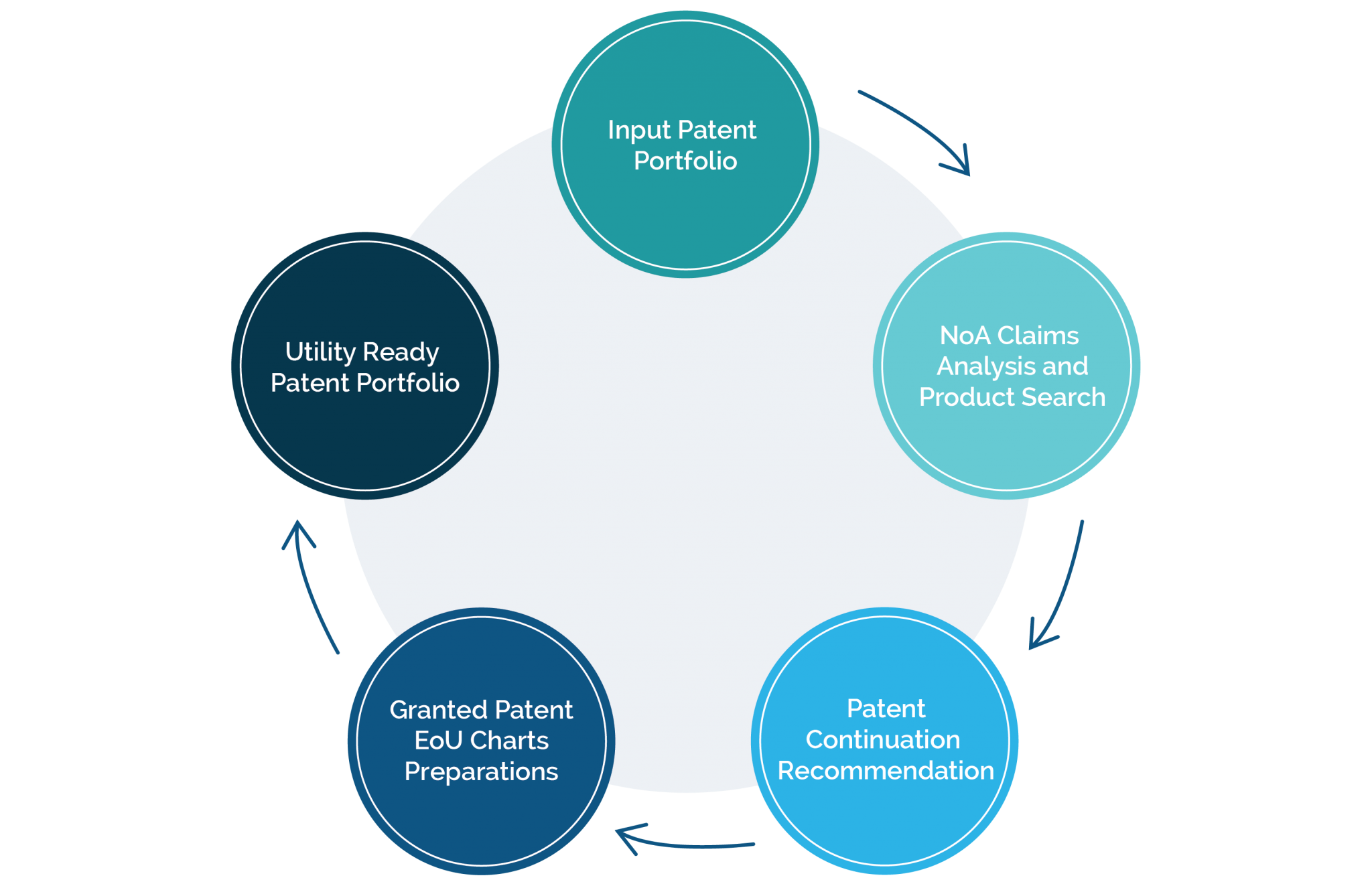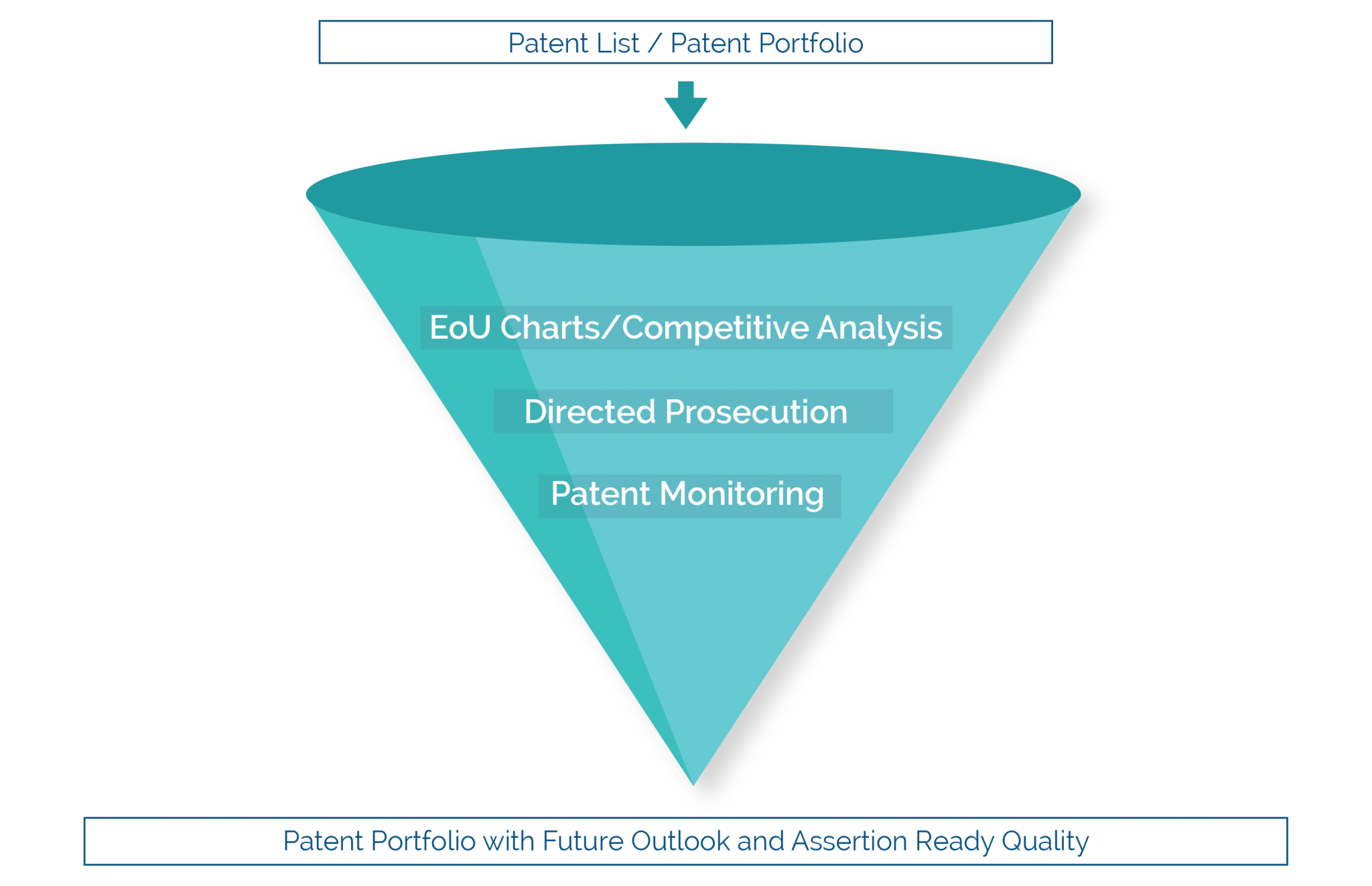The Challenge
Our client, a leading e-commerce company in the US, wanted to expand its existing patent portfolio, improve the value of pending patent applications, and ensure the future applicability of the patent portfolio in various market domains. They wanted a strategic approach to increase the patent portfolio’s quality and prune out bad or low-quality patents from the patent portfolio. They also wanted a competitive analysis to know the strong and weak areas of the patent portfolio. The client has a patent portfolio of more than 2000 patents and around 500 pending patent applications. The client wanted an in-depth technical analysis with an eye toward improving the quality of a patent portfolio.
Our Solution
Our team deployed a hybrid approach to increase the value of the pending patent applications and portfolio of granted patents to increase the client’s patent portfolio.
The team deployed the following:
Directed Prosecution for pending patent applications with and without Notice of Allowance (NoA) to file continuation to expand promising patent families.
Conventional infringement search for granted patents.
Our client’s competitive landscape indicates strong and weak technological areas in the patent portfolio for their products and competitors’ patent and product landscape.
We developed a seamless workflow, which has now become integral to the client’s patent portfolio development. Our team’s infringement research and search analysis supported the client in making informed decisions on expanding the patent portfolio with future utility and assertion ready for both offensive and defensive approaches.
- Directed Prosecution: For each NoA application, we performed the analysis of the allowed claim and performed an infringement search to identify any competitors’ overlapping commercial products or technology. Analysis of the standard bodies and open-source technologies was also considered in the workflow.
In case the claim of a pending application was infringing on a product, the in-house counsel was informed, and the patent was bucketed in a high-value patent list. Also, in some cases, a recommendation was made to file a continuation with a slightly different claim scope that can still be mapped on competitors’ overlapping commercial products or technology.
For patent applications with incomplete infringement, we identified unclaimed key features or embodiments described in the client’s specifications which can be included in the claims for filing continuation patents. - EoU Chart: Based on the identified products, we generated EoU charts mapping out the allowed claim and for granted patents. The patents with a short remaining life and which cannot be infringed by a commercial product and of an obsolete technology were recommended for pruning. Based on the strategic approach of the client, annuities of ~100 patents were not paid.
- Patent Monitoring: Our team focussed on the patent monitoring of our client. Whenever a Notice of Allowance was issued, an infringement search was performed on the allowed claim to identify commercial products and recommend the client for continuation.
- Portfolio Categorisation: Patents were categorized to show the portfolio’s diversification and indicate the portfolio’s strong and weak areas. The categorization was updated for all the allowed patents to dynamically show the changing nature of the client’s patent portfolio.


The Impact
Our efficient patent analysis, product search, and patent family continuation within a hybrid workflow helped the client unlock the true value of the patent portfolio regarding future applicability and pruning out bad patents.
EoU charts were created for 60 pending applications making a future-ready patent portfolio of the client. Also, EoU charts on 50 granted patents were prepared for the offensive and defensive approach of the client.
The client realized the potential of the existing patent portfolio in addition to the pending applications. Expanded patent portfolio with an eye toward the competitors’ products and technology helped the client build a high-value patent portfolio, paving a path for future monetization and cross-licensing discussions, thus enabling both offensive and defensive approaches.
The client can channel R&D expenditure and develop an overall balanced patent portfolio covering the major technical areas of the existing and future technologies.

